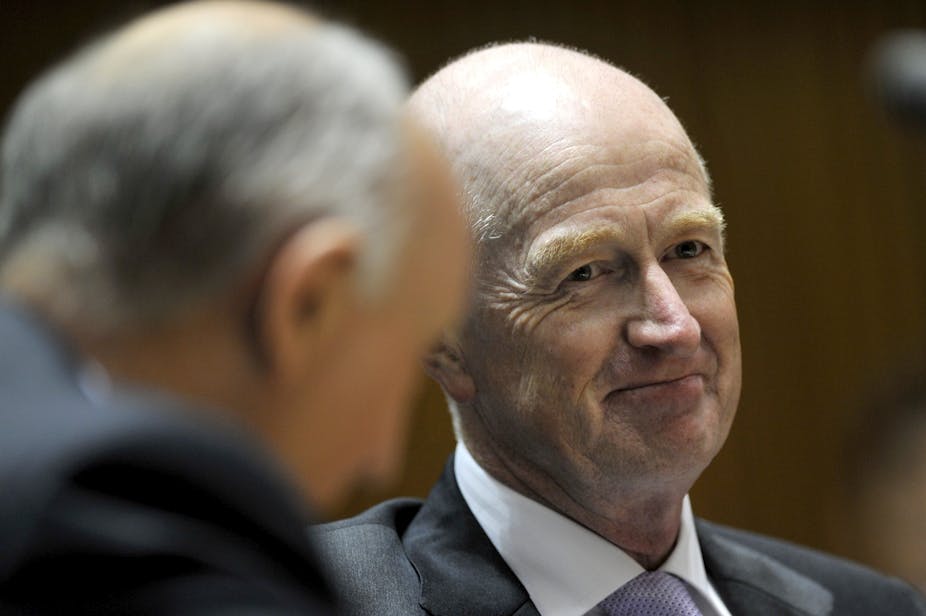UPDATE: The Reserve Bank of Australia has cut Australia’s official cash rate by a larger-than-expected 50 basis points, to 3.75%.
In the likely event that the Reserve Bank Board chooses to ease the target cash rate by 25 (or even 50) basis points later today, it is almost guaranteed that all of the major daily newspapers around the nation will provide an overwhelmingly glowing assessment of the Board’s monetary policy decision on behalf of the Aussie battlers, who will breathe a collective sigh of relief.
Indeed, we may be treated to headlines reporting a cut analogous to “RBA Christmas Cheer”, the likes of which we saw after the last rate fall in December last year (also in the same month of 2008, 2001 and 1998); we may even see cartoons depicting Glenn Stevens as and the other Board members in a very flattering light.
The tendency of media outlets, print and otherwise, to almost unambiguously characterise interest rate decreases as good and increases as bad ensues irrespective of whether such a decision is truly the best call to maintain inflation within the target band and ensure full-employment in the medium-term.
However, not everyone will be celebrating, should it comes to pass as predicted. We need only to refer to the basics of credit markets for this to become apparent – contrary to popular belief; interest rate cuts (likewise increases) create both winners and losers.
Specifically, when banks pass on a rate cut to their customers, it benefits borrowers - even those with a smaller amount of savings. However, it is to the detriment to net savers, whose returns on those savings fall. Could it be that most columnists fall into the former category?
As for the argument that a fall in market interest rates is supposed to be good for future economic activity, the danger is that market rates may already be lower than the optimal levels for medium-to-longer term growth. If so, the current injection of economic activity produces heavier recessionary pressures later, not to mention the threats of inflation and economic volatility.
The disclaimer is that in reminding readers of this, I am someone who would like to own their own property but, for the time being, feels having been frozen out of the home ownership market by significant past price rises fuelled by more aggressive (but arguably less-creditworthy) borrowers. Hence, one falls into the net saver category.
As schadenfreudian as it may sound, I would personally love to see a rate rise this afternoon, followed by further hikes in the coming months, until defaults in credit markets clear out all the suckers who should not have outbid me in each of those auctions in the first instance. Then, property prices will return to levels consistent with the underlying fundamentals.
The lament that one feels about the asymmetric media coverage is that it seems to pander predominantly to the significant proportion of their readership that are net borrowers, and increasingly so: the 2006 census revealed that 64.8% of all private dwellings in Australia were owner-occupied, down slightly from 66.4% in 1996.
More strikingly, the proportion of these properties owned outright declined significantly over that decade, from approximately 62% to 51%, which in turn means that more homeowners have mortgages. The impending release of data from the most recent census in August last year will shed further light on this emerging trend.
The balance of power may be starting to change, however, with the ranks of self-funded retirees set to expand in the coming years, as the baby boomers begin to retire in greater numbers, combined with a higher propensity to save for retirement by successive generations of workers.
Should demographic change eventually bring about such redistribution in media consumption influence from borrowers to savers, then media providers may think twice about how they spin their coverage of interest rate changes and monetary policy generally.
In the meanwhile, net savers should to be reminded that they can exert their influence by sending letters to the editor of their favourite newspaper, demanding that the reporting of such issues be more objective to both sides of the balance sheet.

